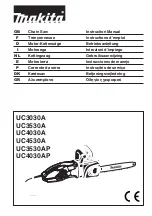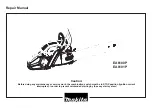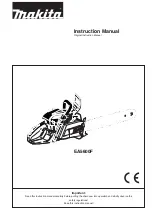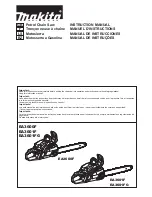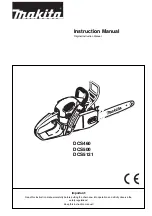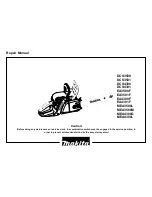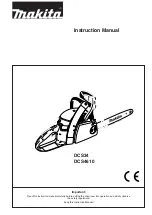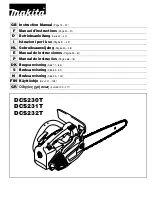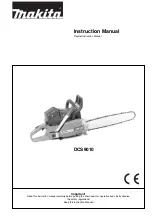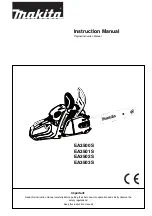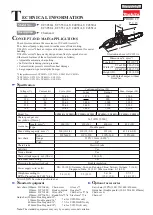
13
GB) FELLING
GR)
H
F
D
6.
G
B
E
A
C
I
L
5cm
K
J
K
L
M
J
GB) ILLUSTRATION 6.
A
) Wear a hard hat.
B
) Consider the direction in which the tree leans.
C
) Be wary of dead limbs.
D
) Clear out the underbrush around the tree to be felled.
E
) Prepare a path of safe retreat.
F
) Consider the distribution and weight of heavy limbs.
G
R)
Keep all bystanders at a safe distance (at least twice the height
of the tree).
H
) Consider wind direction.
I
)
CAUTION
Do NOT fell trees near power lines or near buildings which could
be struck by falling limbs or the tree itself.
GR) 6.
) &#% #&!.
) "&6&$*2% %>0-2 "&! &"&* $1% & +1&.
C) &21'% '%56+.
D) 0*2% 56&-! &-! 0#3&-! $>< "5 & +1&.
) &%&3#2% 1 3&&"# $ 246 "&782.
F) "&6&$*2% &3 & =#&! < 3%$#6< 6+8.
G) 2% 56&-! 52&-! =*2& "62*& 2! 2% 246
"522 (&-6#72& +>& 4&1! 3%$6>% "5 & >D&!
&- +1&-).
H) "&6&$*2% %>0-2 &- 13&-
I
)
X
*7%% +1 &# 2% 6%&45 68+ &#
2% * "&- 3"&%* 7-"0&> "5 "82 < 6+8
"5 & *+& & +1&.
GB
) To control the direction (
J
) in which a tree will fall, a “NOTCH” (
K
)
is cut into the tree before the (
felling
) “BACK CUT” (
L
) is made. A
band of uncut wood is left
between
the notch and the back cut (see
“
M”
in illustration
7
).
GR) %61$7%% %>0-2 "&! &"&* 0 "12% &
+1&, (J), #% 3* “” (K) " "5 &
(L) "&- 0 #%% 2 "*2< "6%-# &- +1&-.
"3%*% 1 &33# '>6&- 3%'> ! %$&"! !
%6%-*! "&#! (+%*% & “M” 2 %5 7).
GB
) Study the illustrations- learn how to control the direction of fall:
ILLUSTRATION 7.
J
) LINE OF FALL.
K
) Closing of NOTCH.
L
) Opening of BACK CUT.
M
)Bending of HINGEWOOD.
ILLUSTRATION 8.
E
) Clear a path of safe retreat.
J
) LINE OF FALL.
N
) 45
o
GR) %6%2% ! %5%!, +%*% "8! -"&6&$*@%%
%>0-2 ! "82!:
7.
J)
K) 6%*23& .
L) &$3 &-
M) >$23 &- .
8.
E) 0*2% 3&&"# $ 246 -"&782.
J)
N) 45
°
N
J
8.
E
7.

























